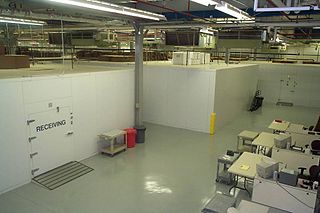Related Research Articles

Esri is an international supplier of geographic information system (GIS) software, web GIS and geodatabase management applications. The company is headquartered in Redlands, California.
Procurement is the process of finding and agreeing to terms, and acquiring goods, services, or works from an external source, often via a tendering or competitive bidding process.

The V-model is a graphical representation of a systems development lifecycle. It is used to produce rigorous development lifecycle models and project management models. The V-model falls into three broad categories, the German V-Modell, a general testing model and the US government standard.
Oracle Applications comprise the applications software or business software of the Oracle Corporation. The term refers to the non-database and non-middleware parts.

ArcGIS is a family of client software, server software, and online geographic information system (GIS) services developed and maintained by Esri. ArcGIS was first released in 1999 and originally was released as ARC/INFO, a command line based GIS system for manipulating data. ARC/INFO was later merged into ArcGIS Desktop, which was eventually superseded by ArcGIS Pro in 2015. ArcGIS Pro works in 2D and 3D for cartography and visualization, and includes Artificial Intelligence (AI).
The Central Contractor Registration (CCR) was the primary supplier database for the U.S. Federal government until July 30, 2012. The CCR collected data from suppliers, validated and stored this data, and disseminated it to various government acquisition agencies. On July 30, 2012, the CCR transitioned to the System for Award Management (SAM) e-procurement system.
The Information Technology Management Reform Act of 1996 is a United States federal law, designed to improve the way the federal government acquires, uses and disposes information technology (IT). It was passed as Division E of the National Defense Authorization Act for Fiscal Year 1996. Together with the Federal Acquisition Reform Act of 1996, it is known as the Clinger–Cohen Act.
Systems Engineering and Technical Assistance (SETA) contractors are government contractors who are contracted to assist the United States Department of Defense (DoD) components, and acquisition programs. SETA contractors provide analysis and engineering services in a consulting capacity, working closely with the government's own engineering staff members. SETA contractors provide the flexibility and quick availability of expertise without the expense and commitment of sustaining the staff long-term.

Marine Corps Systems Command (MCSC) is the acquisition command of the United States Marine Corps, made up of Marines, sailors, civilians and contractors. As the only systems command in the Marine Corps, MCSC serves as Head of Contracting Authority and exercises technical authority for all Marine Corps ground weapon and information technology programs. MCSC is headquartered at Marine Corps Base Quantico.
Software asset management (SAM) is a business practice that involves managing and optimizing the purchase, deployment, maintenance, utilization, and disposal of software applications within an organization. According to ITIL, SAM is defined as “…all of the infrastructure and processes necessary for the effective management, control, and protection of the software assets…throughout all stages of their lifecycle.” Fundamentally intended to be part of an organization's information technology business strategy, the goals of SAM are to reduce information technology (IT) costs and limit business and legal risk related to the ownership and use of software, while maximizing IT responsiveness and end-user productivity. SAM is particularly important for large corporations in regard to redistribution of licenses and managing legal risks associated with software ownership and expiration. SAM technologies track license expiration, thus allowing the company to function ethically and within software compliance regulations. This can be important for both eliminating legal costs associated with license agreement violations and as part of a company's reputation management strategy. Both are important forms of risk management and are critical for large corporations' long-term business strategies.
The Defense Integrated Military Human Resources System was an enterprise program of the Business Transformation Agency's Defense Business Systems Acquisition Executive, within the United States Department of Defense (DoD). As the largest enterprise resource planning program ever implemented for human resources, DIMHRS was to subsume or replace over 90 legacy systems. The first phase of DIMHRS was expected to roll out first to the U.S. Army in 2009 and bring all payroll and personnel functions for the Army into one integrated web-based system. The U.S. Air Force, United States Navy and the Marines were expected to roll out in that order after the Army had implemented it. On January 16, 2009, the Deputy Secretary of Defense issued a memorandum directing the MILDEPS and the Defense Finance Accounting Service (DFAS), to confirm the "core" enterprise requirements of the capability at that time. Once, confirmed, the BTA was to transition the solution to the individual MILDEPS to build out and deploy their own required personnel and pay solutions using the "core" to the maximum extent possible..(Memorandum, Deputy Secretary of Defense, January 16, 2009, Subject: Acquisition Decision Memorandum for the Defense Integrated Military Human Resources System). The solution was transitioned to the MILDEPS on September 30, 2009. After numerous delays, technical problems, and other issues, in February 2010, the DoD completed the transition of the program, after 11 years and $850 million.
The Transformational Satellite Communications System (TSAT) program was a United States Department of Defense (DOD) program sponsored by the U.S. Air Force for a secure, high-capacity global communications network serving the Department of Defense, NASA and the United States Intelligence Community (IC). It was intended as an enabler of net-centric warfare that would facilitate defense and intelligence professionals making rapid decisions based on integrated, comprehensive information. In 2003, the estimated project costs for the period up to 2015 were estimated to US$ 12 billion. In October 2008, the DoD announced that it was postponing making a decision on choosing a contractor to build the system until 2010. In April 2009 Secretary of Defence Robert M. Gates asked that the project be canceled in its entirety.
The United States Department of Defense High Performance Computing Modernization Program (HPCMP) was initiated in 1992 in response to Congressional direction to modernize the Department of Defense (DoD) laboratories’ high performance computing capabilities. The HPCMP provides supercomputers, a national research network, and computational science experts that together enable the Defense laboratories and test centers to conduct research, development, test and technology evaluation activities.
Initial operating capability or initial operational capability (IOC) is the state achieved when a capability is available in its minimum usefully deployable form. The term is often used in government or military procurement.
In information systems, applications architecture or application architecture is one of several architecture domains that form the pillars of an enterprise architecture (EA).

The Department of Defense Serum Repository is a biological repository operated by the United States Department of Defense containing over 50,000,000 human serum specimens, collected primarily from applicants to and members of the United States Uniformed Services.

Military acquisition or defense acquisition is the "bureaucratic management and procurement process", dealing with a nation's investments in the technologies, programs, and product support necessary to achieve its national security strategy and support its armed forces. Its objective is to acquire products that satisfy specified needs and provide measurable improvement to mission capability at a fair and reasonable price.
NASA's Solution for Enterprise-Wide Procurement (SEWP) is a United States Government-Wide Acquisition Contract (GWAC) authorized by the U.S. Office of Management and Budget (OMB) and managed by the National Aeronautics and Space Administration (NASA).

The Federal Information Technology Acquisition Reform Act made changes to the ways the U.S. federal government buys and manages computer technology. It became law as a part of the National Defense Authorization Act for Fiscal Year 2015 (Title VIII, Subtitle D, H.R. 3979.
Perforce, legally Perforce Software, Inc., is an American developer of software used for developing and running applications, including version control software, web-based repository management, developer collaboration, application lifecycle management, web application servers, debugging tools and Agile planning software.
References
- ↑ "Standard Procurement System: Program History". Archived from the original on 2011-07-26. Retrieved 2008-03-07.
- ↑ "FAR Part 12: Acquisition of Commercial Items" . Retrieved 2021-05-24.
- ↑ "Standard Procurement System: Continued Investment Has Yet to Be Justified" (PDF). 2002-02-07. Retrieved 2008-03-07.
- ↑ Havenstein, Heather (2005-09-28). "Troubled DoD Procurement System Makes Move to The Web". CIO Magazine. Retrieved 2021-05-24.
- ↑ "Two DoD Acquisition Programs Win Awards". 2003-12-11. Retrieved 2008-03-07.
- ↑ "DOD's Standard Procurement System Wins CIO Enterprise Value Award" (PDF). 2005-11-05. Archived from the original (PDF) on 2011-07-26. Retrieved 2008-03-07.
- ↑ "SPS Statistics". Archived from the original on 2011-07-22. Retrieved 2008-03-07.
- ↑ "A Better Way to Write Contracts" . Retrieved 2021-05-22.
- ↑ "Under Secretary of Defense, Updated Procurement Functional Strategy" (PDF). Retrieved 2021-05-22.